Multi-generational local farmers explain the latest challenge to their survival
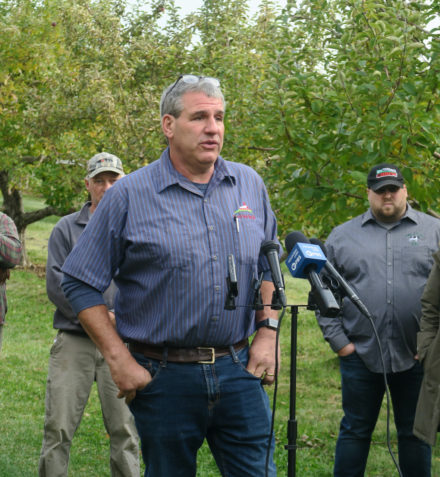
Tony LaPierre
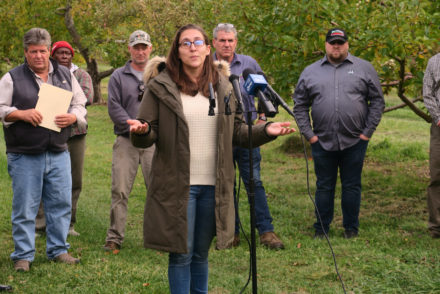
Helen Giroux
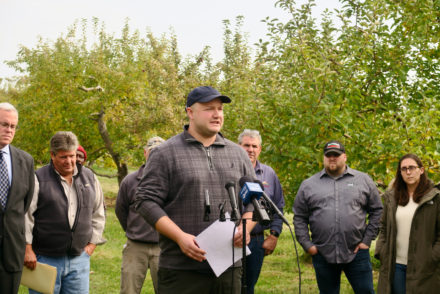
Jesse Mulbury
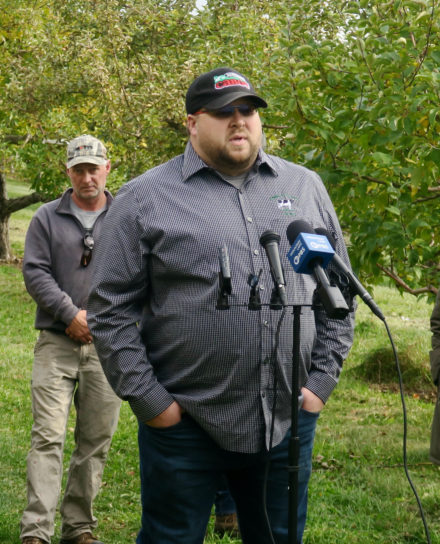
Todd Giroux
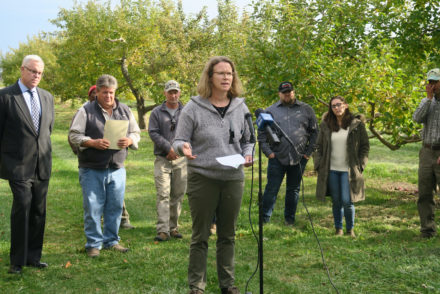
Joanna Laidback
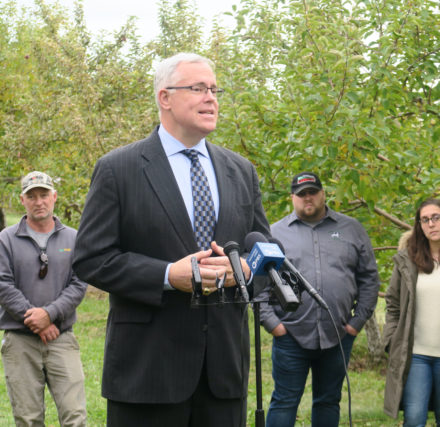
State Senator Dan Stec

Assemblyman Billy Jones
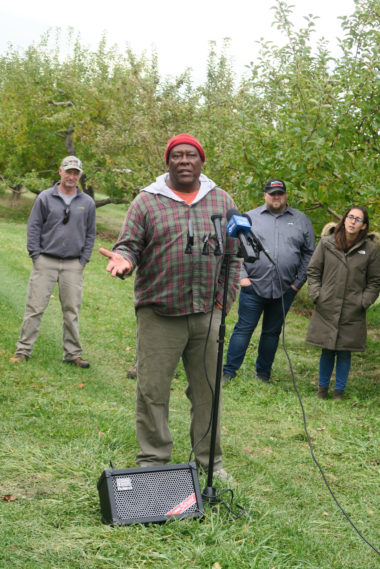
Paul Fisher
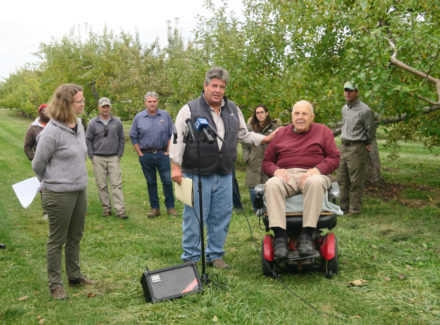
Jon Rulfs introduces his father Bob Rulfs
By John T. Ryan
Peru – Several area dairy farmers, orchardists, farm advocates gathered at Rulfs Orchard last Tuesday. They want Albany political leaders and the State Wage Board to know that reducing the farm workers overtime threshold would severely impact their livelihood. In 2019, the NYS Legislature passed, and the governor signed the Farm Laborers Labor Standards Act. It lowered the farmworker overtime threshold from 80 to 60 hours, meaning farmers must pay time and one-half for every hour worked over 60 hours per week. Labor advocates would like the overtime threshold reduced to 40 hours. Later this year, the State Wage Board is scheduled to revisit the issue.
Jon Rulfs, the owner of Adirondack Farms in Peru, moderated the presentation. Speakers included Paul Fisher, one of Rulfs’ Jamaican workers; Jesse Mulbury, Farm Manager of Northern Owners and Chairman of the New York Apple Growers Association; Helen Giroux of Chazy Orchards and Giroux Poultry Farm, Tony LaPierre, owner of Rusty Creek Farm in Chazy; Todd Giroux, President of the Clinton County Farm Bureau, Joann Laidback Adirondack Farms CFO, State Senator Dan Stec, and Assemblyman Billy Jones.
Local orchardists rely on Jamaicans to harvest the apple crop during the six to eight week harvest period. Thanks to the Department of Labor’s H-2A program many Jamaicans have been coming here at harvest time for thirty or more years, which isn’t hard to understand since the H-2A entitles them to a minimum wage of $14.99 hourly. In Jamaica, the minimum wage is $45.12 per week. Hundreds of Jamaicans work in Peru during harvest. Not only orchardists, but many other Peru residents look forward to their arrival. They’ve become part of Peru’s culture.
Paul Fisher has been coming to Rulfs Orchard for twenty-seven years. He said Rulfs Orchard has been good for him and his family, including his sons Claude and Damion, who also work at Rulfs. However, Fisher said he and his sons had lost working hours since NYS imposed the 60-hour overtime limit. They have discussed finding work in another state if New York reduces the overtime limit even further.
Jesse Mulbury emphasized that the program works well for both visiting workers and local workers. He said, “The H-2A program is a huge opportunity for the workers and their families. It’s a win-win for both the participating employees and the orchards. The program also ensures that domestic workers make as much, if not more.” Mulbury envisions Jamaican workers going to states that don’t have overtime limits. He said, “Local orchards will not be able to afford the overtime and likely will not survive if the threshold goes any lower. We can’t control apple prices like the manufacturers of an iPhone.”
Helen Giroux of Chazy Orchards, a 3rd generation farmer, said growing apples is a calculated risk involving many factors, including when and how quickly the farmer must harvest the crop. She said, “This year, everything seemed to come at the same time, so we had to go full out. If labor costs continue to rise, growers will not reinvest back into the orchards.” She foresees farmers cutting back on tractor and equipment purchases and fears that smaller producers would face the most challenging decisions.
5th generation dairy farmer Tony LaPierre emphasized that it’s impossible to find local workers to care for his 1,000 head herd . He said, “If labor costs rise, introducing more technology will be the next step.” Todd Giroux said he’s already introduced robots into the milking operation at his Beekmantown farm.
Joanna Laidback said a 40-hour overtime threshold would increase Adirondack Farm’s labor costs by about 15%, a considerable sum on a farm that has 120 full-time employees. She added, “New York farmers would experience an overall labor cost increase estimated at $264 million in an economic sector that already has tight margins.” Laidback also noted the environmental impacts when farms shut down, saying, “You would lose that person who cares for the land.”
State Senator Dan Stec stressed the competition New York apple growers face, especially from the state of Washington. Large corporations, not family farms, operate most of Washington’s orchards. Washington’s orchards are larger and have fewer environmental regulations resulting in a lower cost of production. Speaking of the state legislature he commented, “ We’re begging farms to stay in NYS. We’re putting budget dollars into preserving farms, but raising the overtime threshold is the exactly the opposite.” Stec concluded, “New York apples may taste the best, but if there’s a big price difference, people are not going to buy New York apples…New York Wage Board, I hope you’re listening. Governor Kathy Hochul, I hope you’re listening.”
Assemblyman Billy Jones recalled his experience growing up on a Chateaugay dairy farm. He said, “At one time, there were eleven farms along the road where he grew up. Today’s there one.” Addressing the Wage Board, he said, “Leave it at 60. That’s all we’re asking. Farming is a unique profession. As the old expression says, farmers have to make hay when the sun shines.”
Jones is correct about farming’s decline in New York State. According to state statistics, between 20o8 and 2018, dairy farms declined from 5,623 to 4,194 or 25%. From 2017 to 2018, the number of farms decreased by 6% in just a single year.
Click here to view that report.
For more statistics on the farmer’s point of view, Click here to see a view report issue from the Farm Credit East, a leading agriculture institute.
Posted: November 15th, 2021 under Agricultural News, Business News, General News, Northern NY News, Peru News, Peru/Regional History, State Government News, State Legislator News.
